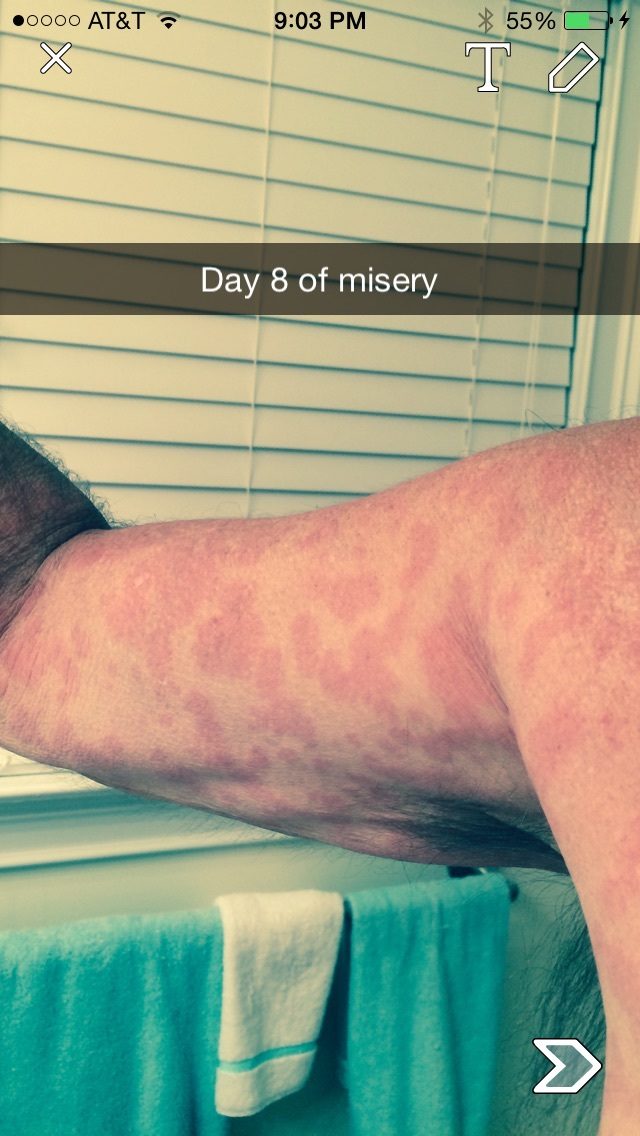

Laundry detergent manufacturers frequently utilize proprietary fragrance blends, making it impossible for customers to determine exactly what's in them.

Artificial scents are another class of chemicals that can irritate the skin. For those with sensitive skin, harsh surfactants might be unpleasant. Surfactants function by dislodging dirt and oil particles so they can be rinsed away. Detergents, like most soaps, contain a surfactant, or surface-acting ingredient.
Rash from laundry detergent skin#
Generally, it's not uncommon for people to have skin responses to the chemicals in conventional detergents. The sensitive skin on your face may be irritated by a freshly washed pillowcase. Symptoms might be exacerbated in regions where clothing gets wet with sweat, such as the armpits and groin. Because washed clothing comes into contact with your entire body, symptoms can emerge anywhere. However, if the symptoms are severe, you should look into laundry detergent as a possible reason. Contact dermatitis is most commonly found in places exposed to strong irritants, such as the skin beneath a piece of jewelry. You may experience a reaction to a detergent the first time you use it or after repeated use.

It happens when an irritating chemical affects your skin's top layer, resulting in an itchy rash.
Rash from laundry detergent full#
They may smell like morning dew or spring rain, but it's probably full of dangerous chemicals that cause skin irritation. Getting an allergy from laundry detergent is the most common type of skin allergy. The skin can be irritated by many substances. It seriously affects children’s life quality and has to be cured immediately. It's a significant concern when youngsters feel itchy every day of their lives. Some parents are very strict about the treatment of other health concerns but ignore their child's eczema, believing that skin problems are minor. In short, Eczema can be controlled rather than cured. Cool, damp compresses, anti-itch lotions, and other self-care measures can help soothe your skin. The rash normally clears up in two to four weeks if the offending chemical is avoided. To effectively treat contact dermatitis, you must first identify and prevent the source of your reaction.

You can also use over-the-counter anti-skin allergy ointments or lotions. As an immediate treatment, use a fragrance-free soap and wash the afflicted region with cool water. Laundry detergent allergies or sensitivities can occur after a single encounter or after repeated exposures depending on the degree of someone’s skin sensitivity. Contact dermatitis, which manifests as a red, itchy rash that can be broad or limited to specific places such as the armpits and groin, can be triggered by laundry detergents. Eczema-prone babies and children are more likely to develop contact dermatitis than those who do not have skin problems. When something irritates the skin it causes a rash. Chemicals in some laundry detergents can cause skin dermatitis. Swelling of the face, tongue, lips, diarrhea, or vomiting is other symptoms. The skin may get flushed or breaks out in a rash. An allergic response in a baby looks like Itchy welts or hives. It may take some time for the immune system to recognize allergies. You may not notice redness or itching for up to a week if your child is allergic to laundry detergent or fabric softener. It means they are not always caused by direct touch. From some proven facts, it is clear some red, itchy rash are caused by laundry detergent especially when they are used for washing baby clothes.


 0 kommentar(er)
0 kommentar(er)
